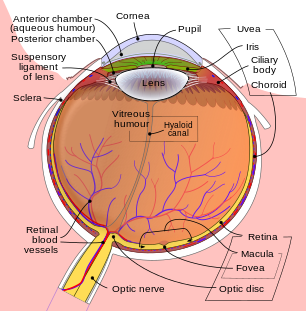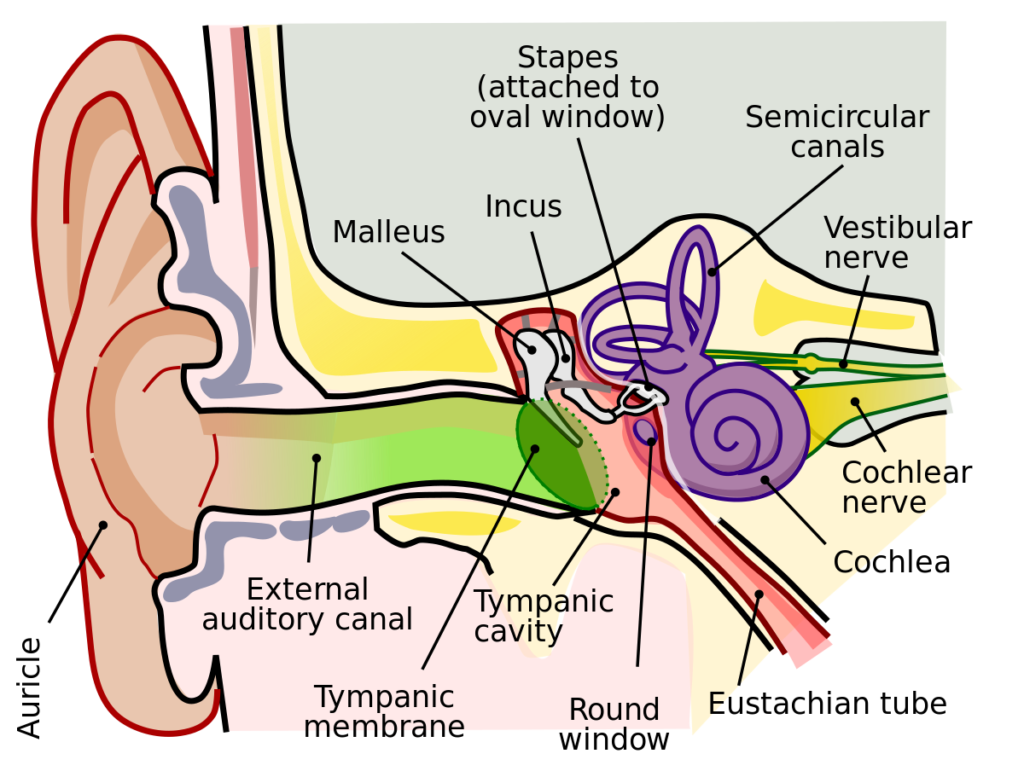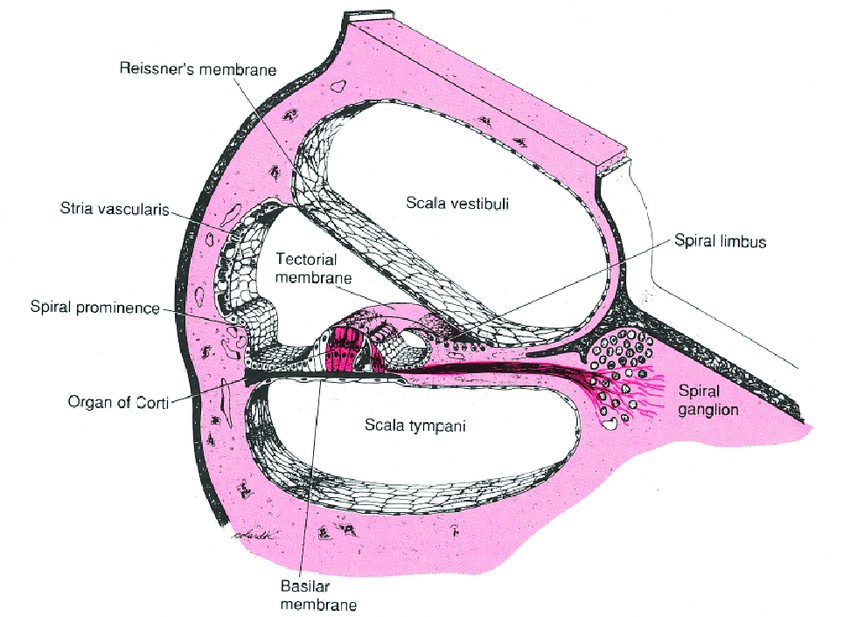NEURAL CONTROL AND COORDINATION
SENSORY RECEPTION AND PROCESSING
- Sensory organs detect all types of changes in the environment.
Sensory receptors →Input→ CNS→output→ Parts/Organs
(Detect stimuli) (Process analyse) (Response to stimuli)
SENSE ORGANS
Sense organ Sense Features associated
Nose Smell + Mucus coated olfactory epithelium (single) having three types of cells.
+ Neurons extend directly into been sized olfactory bulb that are extensions of limbic system
Tongue Taste + Input from taste buds is conveyed to (single) the brain and a complex flavour
of food or drink is perceived.
Ear Hearing,balance + Input from organ of Corti and (Paired) vestibular apparatus is conveyed
to CNS
Eye Vision + Enclosed in sockets of skull (orbits)
(Paired) + Nearly spherical in structure.
Note:- The chemical sense of gustation (taste) and olfactory (smell) are functionally similar and interrelated as they detect dissolved chemicals.
EYE
- The wall of the eyeball is composed of three layers.
– External
– Middle
– Inner. - External Layer (Sclera):-
– Anterior-Cornea
– Posterior- Sclera+Composition – Dense connective tissue
Middle layer (Choroid)
Irish- Anterior, opaque, pigmented, visible coloured portion of the eye
– Regulates the diameter of pupil through its muscle fibres - Ciliary body:– Thick anteriorly
– Hold the lens in place through ligaments - Choroid:- Thin over posterior 2/3rd part
– Contains many blood vessels and looks bluish.
Inner layer (Retina)
Retina:-
-Outer- Photoreceptor cells
Types : Rods and cones
Middle- Bipolar cells
Inner- Gangilon cells
Fovea:-
– Only cones are densely packed
– Thinned central portion of retina
– Point with greatest visual acuity or resolution.
Blind spot:-
– Lies medial to and slightly above posterior pole of eye ball
– No rods or cones here
– Retina blood vessels enter
– Optic nerve leaves the eye.
- Macula lutea– Yellowish pigmented spot lying at the posterior pole of the eyelateral to the blind spot with a central pit called forvea
Photoreceptor cells Vision Photopigments (light sensitive proteins)
Rods Twilight/ Rhodopsin/purplish red protein/
Scotopic visual purple
vision
Cones – Day light/ Types of cones
photopic vision Red – Different photopigments in these cones
and colour vision Green– Sensation of different colours by
various combinations.
Blue- Equal stimulation of these gives sensation of white light
- Photopigments contain an aidehyde of vitamin A/retinal and protein,opsin

MECHANISM OF VISION
Focusses
light rays Opsin(change in)
↓ ↑
Vision→Enter→Cornea→Lens→Photo→contain→ Rhodopsin→↓
light Sensitive dissociates Retinal
rays cells into
Change in
membrane permeability
→→→→→→→→→→→→ Generate potential difference in photoreceptor
transmitted to Generate action potential sent forward to
cells→→→→→→→→ Bipolar cells→→→→→→→→→→→→→→→→→→→→→→
Impulse
Ganglion cells→→→→→Optic nerve →Visual cortex.
- Brain analyse image formed on retina based on earlier memory and experience.
THE EAR
Anatomical→→→→ Outer→→→→→Middle Ear↔↔↔Internal Ear
Division ↓ ↓ ↓
Pinna+ Ear canal Malleus Stapes Labyrinths
- Components:-
+ Fine hair and wax glands are present in their skin.
+ Pinna gathers/collects the vibrations in the air - External auditory meatus/canal:- Extends inwards upto tympanum.
- Eustachian tube:-
+ Connects middle ear cavity to the pharynx.
+ Equalises pressure on either side of tympanum.
Note:-
– Tympanic membrane (a)Connective tissue covered with skin on the outside
is composed of (b) Mucus membrane on the inside.
– Ear ossicies→Arranged in a chain (M→|→S)
– Structure details:- (a) Malleus is attached to tympanum
(b) Stapes is attached to the oval window
– Function:- Increase efficiency of transmission of sound waves to the inner ear

LABYRINTH
It is a fluid filled inner ear,consists of two parts: Bony and Membranous labyrinths.
Encloses
Bony Labyrinth→→→→→→→→→→ Membranous Labyrinth
(filled with perilymph) (filled with endolymph)
Parts of Membranous Sub-parts Receptors Basic functions
labyrinth
-Vestibular apparatus (a) Semicircular Crista – Maintenance of
(complex system) canals (3) ampullaris balance of the body
(b) Otolith organ and posture
|_________________| Macula – Influenced by gravity
Utricle Saccule and movements.
-Cochlea
(coiled apparatus) Sensory hair Hearing
cells in organ
of Corti
Notes:-
- Semicircular canals lie at right angle to each other and the base of each canal is swollen called ampulla.
- These membranous canals are suspended/surrounded by perilymph of the bony canals
- Vestibular apparatus is present above the coiled cochlea.
- Receptors present in vestibular apparatus have hair cells.
COCHLEA
Demarcating Chambers Fluid present Terminating
membrane within region
Reisnner’s – Scala vestibuli→ Perilymph→ Oval window
Basilar – Scala media→ Endolymph
– Scala tympani → Perilymph→Round window

ORGAN OF CORTI
- Located on Basilar membrane
- Contains sensory hairs present in rows on internal side of organ of corti, that act as auditory nerve
- Sensory hair cells-
-Apical part- possess stereocilia
– Above them there is thin elastic membrane called Tectorial membrane.
– Basal part- Is in close contact with afferent nerve fibres forming the auditory nerve.

MECHANISM OF HEARING
- Ear converts sound waves into neural impulses.
- The cerebelium integrates information received from the semicircular canals of the ear and the auditory system.
Sound waves
Received ↓by Vibration transmitted
External ear →→→→→→→Ear drum→→→→→→→→→→→
extends inward through
→ Ear ossicles→→→→→→→→→→→→Oval window→→→→→→→
Transmits vibration to Generate waves in
→Perilymph→Endolymph→→→→→→Ripples in basilar membrane→
induce Germinates
→→→ Hair cells of cochlea against tectorial membrane→→→→→→
Bend impulses in
→Afferent neurons→→→→→→→→→→Auditory nerve→→→→→→
transmitted further to Transmit impulse to
→Auditory cortex (Impulse is analysed and sound is recognised).
- The eye works by capturing light rays, focusing them onto the retina at the back of the eye, where photoreceptor cells (rods and cones) convert light into electrical signals. These signals are then transmitted via the optic nerve to the brain, where they are interpreted as visual images.
- The main parts of the eye include the cornea, iris, pupil, lens, retina, optic nerve, and various muscles responsible for eye movement. Each part plays a specific role in the process of vision.
- The blind spot is a small area on the retina where the optic nerve exits the eye. This area lacks photoreceptor cells, so light that falls on the blind spot cannot be detected. However, our brains fill in the missing information, and we are usually unaware of our blind spots.
- The ear works by capturing sound waves and converting them into electrical signals that can be interpreted by the brain. The ear consists of three main parts: the outer ear, middle ear, and inner ear, each of which plays a role in the process of hearing.
he inner ear contains the cochlea, a spiral-shaped structure filled with fluid and lined with hair cells. These hair cells detect sound vibrations and convert them into electrical signals, which are then transmitted to the brain via the auditory nerve.
- The cochlea is responsible for converting sound vibrations into electrical signals that can be interpreted by the brain. It contains thousands of tiny hair cells that are sensitive to different frequencies of sound, allowing us to perceive a range of pitches.